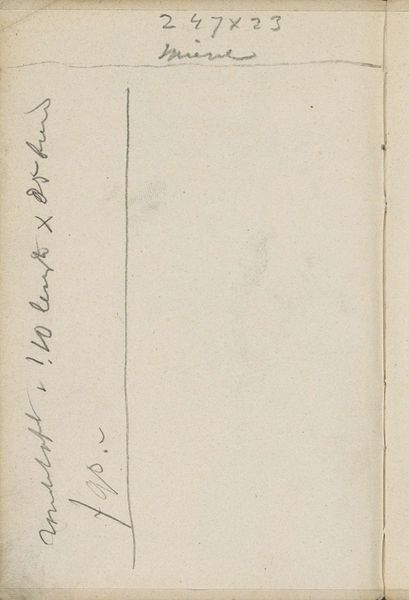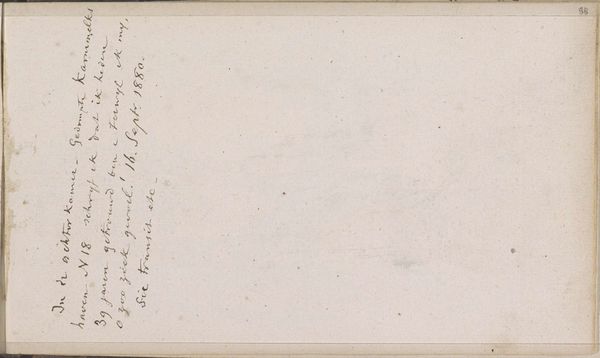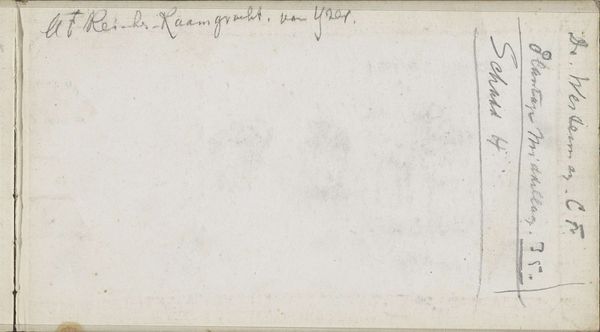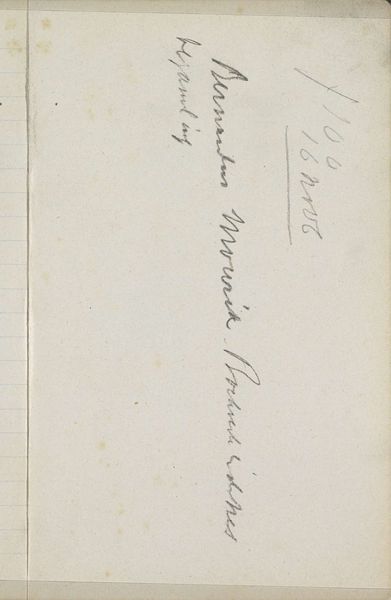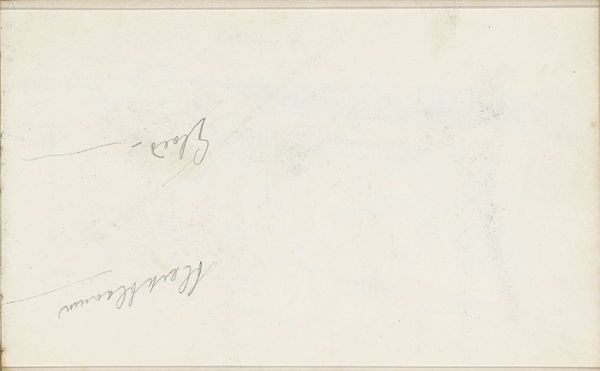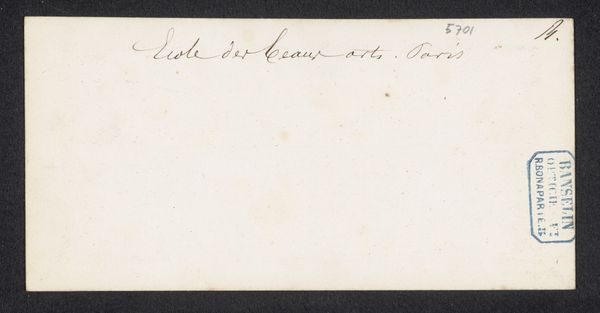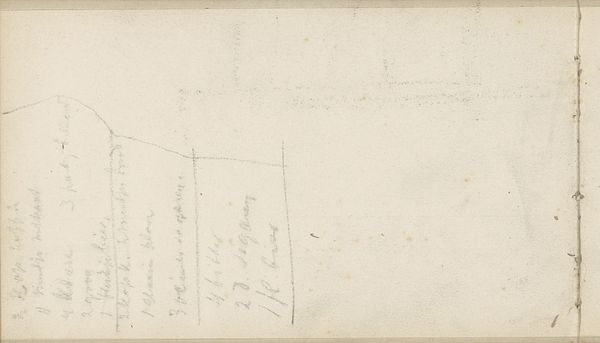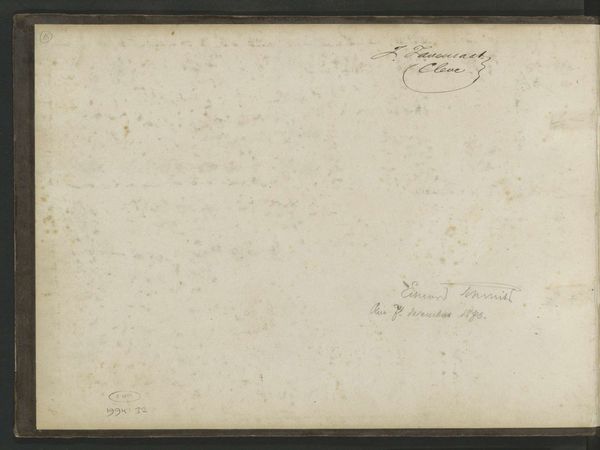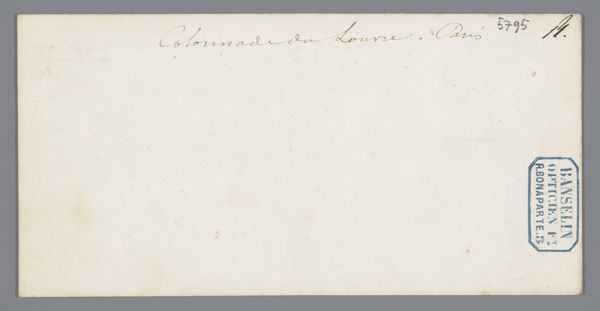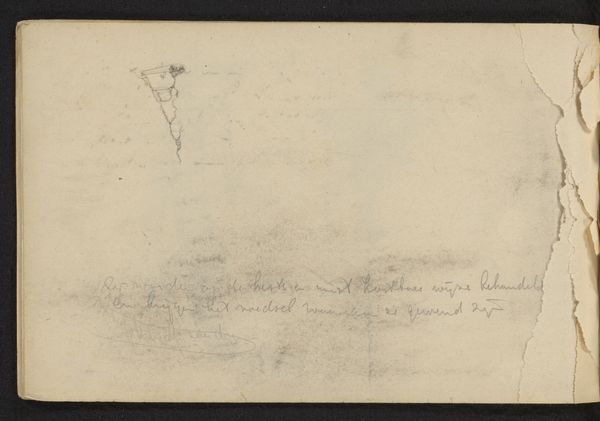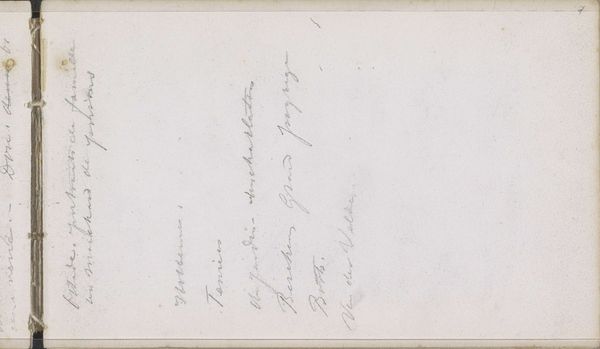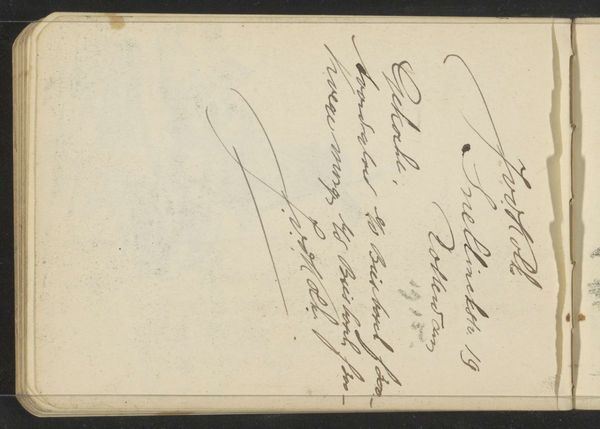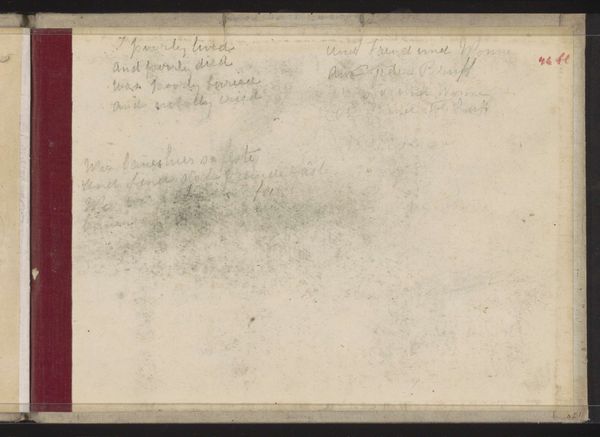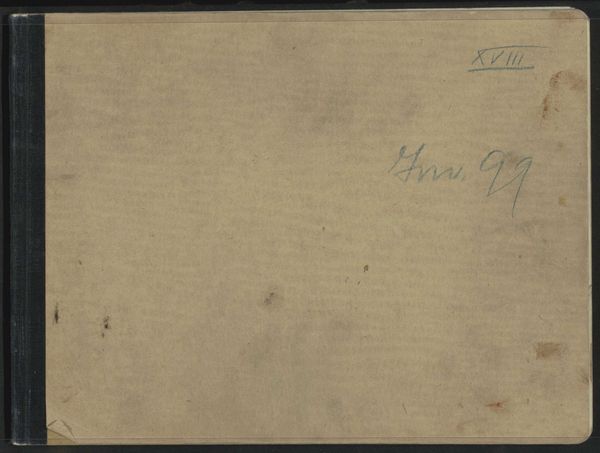
drawing, ink
#
drawing
#
landscape
#
ink
Copyright: Rijks Museum: Open Domain
Curator: This drawing is entitled "Ruïne van kasteel Brederode te Santpoort," and it comes to us from Abraham de Haen the Younger, dated 1731. It’s ink on paper and held in the collection of the Rijksmuseum. Editor: There’s a definite feeling of melancholic resignation emanating from such spare use of line and shading. It speaks volumes about the passage of time. Curator: Indeed. Consider how De Haen has positioned the ruin; see how the faint ink seems to bleed almost seamlessly into the blank page that surrounds it. There's an interesting tension between the skeletal structure and the airy nothingness around it. Editor: Yes, this is no triumphal castle, no celebration of power, only quiet devastation rendered on the page. We might interpret the artwork through a lens that understands the castle ruins as emblematic of power structures overthrown. Brederode Castle faced repeated sieges and destruction, reflecting broader social struggles. Was the artist an active participant, bearing witness through the act of documentation? Or was he recording, for history, an elegy for times changing and systems crumbling? Curator: While those sociopolitical interpretations are insightful, the piece is first and foremost a study of form, shadow, and perspective. It asks the viewer to consider the ruin not merely as an historical artifact, but as a geometrical form interacting with the natural elements. Editor: But isn’t that very formal engagement with the ruins, ignoring social upheavals that reduced the castle, a depoliticization? Who lived there? Who attacked it, and why? To purely aestheticize historical context may allow the artwork to serve as a kind of ideological smokescreen that maintains social indifference. Curator: I concede your point. I suppose any responsible study of form also leads us eventually to content, to questions of social significance and deeper readings of what lies within. Editor: And for me, an overt acknowledgement of such inequities enhances appreciation. We see beyond simple, romantic landscape to history as something that both constructs and dismantles the dominant ideological narrative.
Comments
No comments
Be the first to comment and join the conversation on the ultimate creative platform.
